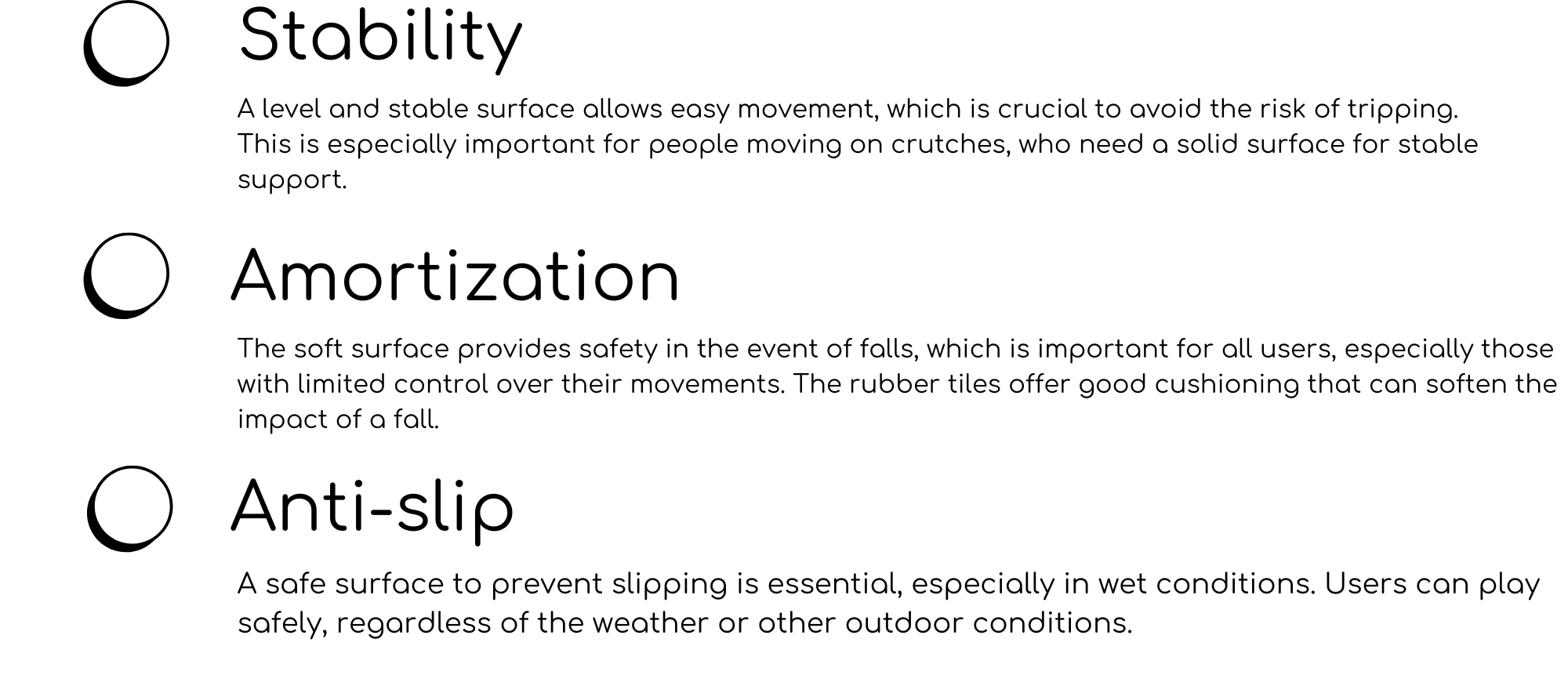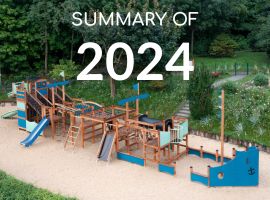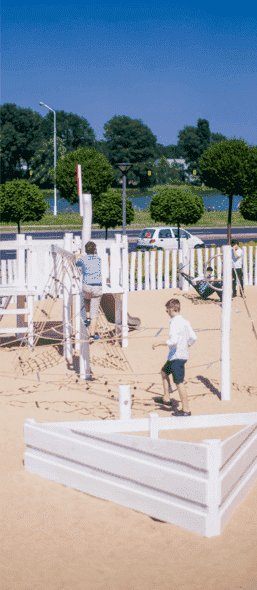
Hardened paths and easy access
One of the basic elements of an inclusive playground is the provision of paved paths that allow easy access for people using crutches or wheelchairs. It is important that these paths are:
-
Wide - the minimum width should be at least 1.5 meters to allow free movement. For playgrounds with large areas, consider even wider paths, which will allow several people to use them at the same time.
-
No thresholds - no obstacles or bumps to impede movement. The surface should be smooth, but at the same time have non-slip properties to ensure the safety of users.
Non-slip surfaces under equipment
When planning playgrounds that are accessible to people with disabilities, a key consideration is the selection of suitable surfaces under playground equipment. Non-slip surfaces, such as rubber tiles or synthetic surfaces like Wetpour, meet the safety and comfort requirements of both wheelchair users and people on crutches.
-
Rubber tiles: They are durable and weather-resistant, making them ideal for outdoor use. Their flexibility and resistance to deformation guarantee durability and reliability in all conditions.
-
Wetpour synthetic surfaces: They are not only durable and easy to clean, but also offer an even surface that is aesthetically pleasing. Availability in a variety of colors and patterns further enhances the playground, making it an inviting and welcoming place for children.
The main advantages of these surfaces are:

When choosing the right surface, it is worth paying attention to these properties to ensure the safety and accessibility of the playground for all children, regardless of their physical abilities.
The most common mistakes in playground planning
When designing playgrounds for children with disabilities, certain mistakes are often made that can significantly limit their functionality and accessibility. Among the most common are:
-
Lack of proper ramps and slopes - even if the playground is theoretically accessible, the lack of proper ramps prevents children that use wheelchairs from using it. It is important that ramps have the right angle of inclination to facilitate entry and exit. We offer specially adapted equipment that has dedicated ramps for wheelchair users.
-
Improper placement of equipment - playground equipment should be placed in a way that allows easy access from paved paths. Each piece of equipment should be surrounded by adequate maneuvering space to allow easy access.
-
Inadequacy of play equipment - many pieces of equipment are designed without considering the needs of children with various disabilities. It is important to consider diversity and choose equipment that will be accessible to as many children as possible. Examples include swings with safety features, carousels adapted to wheelchairs.
-
Unsuitable surface such as sand, bark and stones - these materials are not friendly to people with disabilities, making mobility much more difficult, especially for wheelchair users.
So how to properly design such a playground?
We will discuss it with an example:
In example No. 1 we see the development of an inclusive plaza, where the principles of a paved ramp for people with mobility difficulties, including wheelchairs, have been preserved, but unfortunately at the same time sand has been designed within the safe zones. People with disabilities have access only to certain functions of the facilities. On the other hand, within the swing or playset zone, we have hardened access in the form of paved surfaces, which are not safe surfaces and pose a danger in terms of falling. It is not recommended to combine cobble stone-type hard surfaces within the safe zones of the device, which exceed the parameter of Free Fall Height of 60 cm.
In example No. 2, we see the same playground with a hard surface in the form of rubber tiles, which: constitute the safe surface of the playground, cushion well and are stable enough for people with disabilities and mobility difficulties.
Inclusive playground equipment
An important element of playground accessibility is properly selected equipment that allows children with different types of disabilities to play. Here are some examples:
- Chalkboards and educational boards - our series of educational boards are an interesting enrichment for many playgrounds,both communal and preschool ones. Wheel and Cross or Bingo boards are an invitation to all playground users to play together. The design of the boards (mounting on short poles) allows each child easy access to the working part of the board.
- Thematic playgrounds - a form of play loved by children is to recreate scenes - playing store, airport, kitchen. With this in mind, we created a series of dedicated themed playgrounds. Access to them does not have any architectural barriers - both children in wheelchairs and those who use other mobility aids can use the equipment at the same time.
- Inclusive playground sets - such as Gamma, Beta or Delta, include a ramp for wheelchairs, and the width of all aisles is adjusted to allow free maneuvering of a wheelchair. Such a playground can be used simultaneously by many children, from the age of one.
- Sandboxes and tables - playing with sand has been one of children's favorite playground activities for years. Sand is also a great stimulating tool - often used in sensory therapy. Our series of classic tables and those for sand play have a specially lowered table - adapted for wheelchair to ride up
- Swings - we offer a swing adapted for use by wheelchair users, created according to current standards and recommendations. This swing is made of high-quality steel, has safety straps and a drawable ramp.

Creating playgrounds accessible to all children is an investment in the future that promotes equality. With proper planning, we can create a space where all children, regardless of their abilities, can play and develop in a safe and friendly environment.























